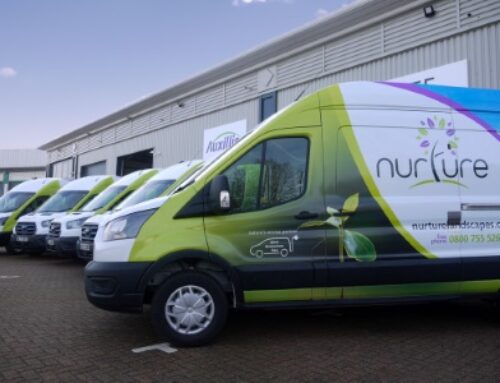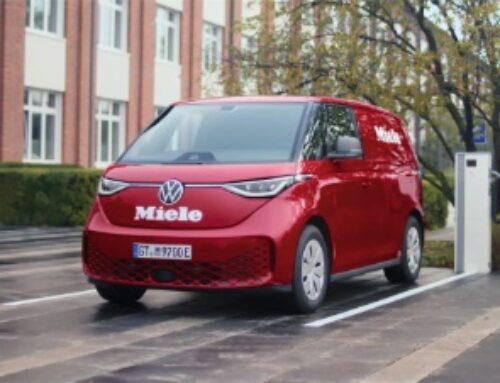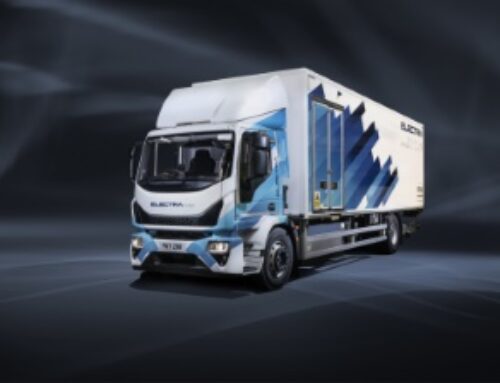Bär: 40 years of lifting performance
 Bär Cargolift, which is celebrating 40 years in the commercial vehicle tail lift sector this year, has outlined some of its key product developments since its origins in 1981.
Bär Cargolift, which is celebrating 40 years in the commercial vehicle tail lift sector this year, has outlined some of its key product developments since its origins in 1981.
The company points to features at its foundation which remain hallmarks of its products today: the robust control unit with two cross-lever switches, hydraulic unit and electrics housed protected in the distinctive square tube, as well as the mechanical joint for gentle, automatic tilting on the ground – even with a full load.
Founder Gerd Bär believed the steel platform common at the time had had its day, and opted for aluminium, with profiles of his own design to ensure sufficient stability, but also to provide advantages in terms of payload and corrosion protection.
Prominent developments over the years include the first underswing, double-folded tail lift in 1983, and in 1988, a new platform with upright aluminium bars which would be a typical Bär feature for many years to come.
With bolted suspension plates and a bolted underrun bar, Bär established a solution in 1990 that was revolutionary at the time, says the company, but is now the market standard.
In 1992, formerly hot-dip galvanised steel components began to recceive a cathodic deep coating (KTL). Bär provided its Cargolifts with a golden 24-month warranty card, which was four times longer than the market standard at that time.
In 1994, the Bär Cargolift Hydfalt was introduced, said to be the first fully hydraulic folding, retractable tail lift with the world’s first aluminium sliding mechanism. It came completely pre-assembled and needed only to be bolted to the vehicle frame.
At the turn of the century, the electrical connection of the tail lift to the truck was complex and thus costly, time-consuming and error-intensive, says Bär. Every tail lift manufacturer had its own connection method, as did vehicle manufacturers.
Gerd Bär had pushed for a standardised solution early on, in order for the Bär Cargolift to become an “integral part of the commercial vehicle”. Together with a market companion, he initiated the Association of German Tail Lift Manufacturers (VDHH).
The lift manufacturers of the VDHH, in coordination with almost all European truck manufacturers, finally created and standardised an electrical interface between truck and lift in 2000, which Bär Cargolift describes as a success for the whole industry and its “most daring undertaking”.
Bär presented its own 2-cylinder series in 2002, followed by the Bär VanLift FreeAccess for the LCV sector in 2006 – with a new, vertically folded platform for increased flexibility in vehicle use. The platform concept BAplan with upright aluminium profiles, and the anti-slip platform surface TracGrip, were also developed. In 2008, a digital fitment analysis programme was introduced, meaning fitment verification could be carried out online.
 With digitalisation and networking in commercial vehicles gaining in importance, Bär gamble on a new 32-bit electronic control system, the eBC Controller – and in 2012, introduced a Bluetooth connection for the Cargolift, its own diagnostic software Bär CargoCheck for detecting electrical faults, and the Bär SmartControl operating concept, which was first introduced with the Bär CargoApp for operating the lift via iPhone.
With digitalisation and networking in commercial vehicles gaining in importance, Bär gamble on a new 32-bit electronic control system, the eBC Controller – and in 2012, introduced a Bluetooth connection for the Cargolift, its own diagnostic software Bär CargoCheck for detecting electrical faults, and the Bär SmartControl operating concept, which was first introduced with the Bär CargoApp for operating the lift via iPhone.
Thanks to new safety features, the operation of the tail lift by radio became much safer, says the firm. Two years later, the Bär SmartControl remote control was introduced as a practical handheld transmitter, and last year, the Bär SmartControl CabControl was unveiled. With the second generation of the eBC Controller, the Cargolift received a CAN bus interface for communication with the vehicle and its components.
At its 40th anniversary, Bär employs around 300 people worldwide and exports its Cargolifts to more than 40 countries.
“We have already set some standards that the industry follows,” said managing director Tobias Bär.
“That is what drives us. Because we know that innovations can be copied, but innovative ability cannot. It is our basis for continuous enhancement. want to pass on a healthy, sustainable company to my children.”










